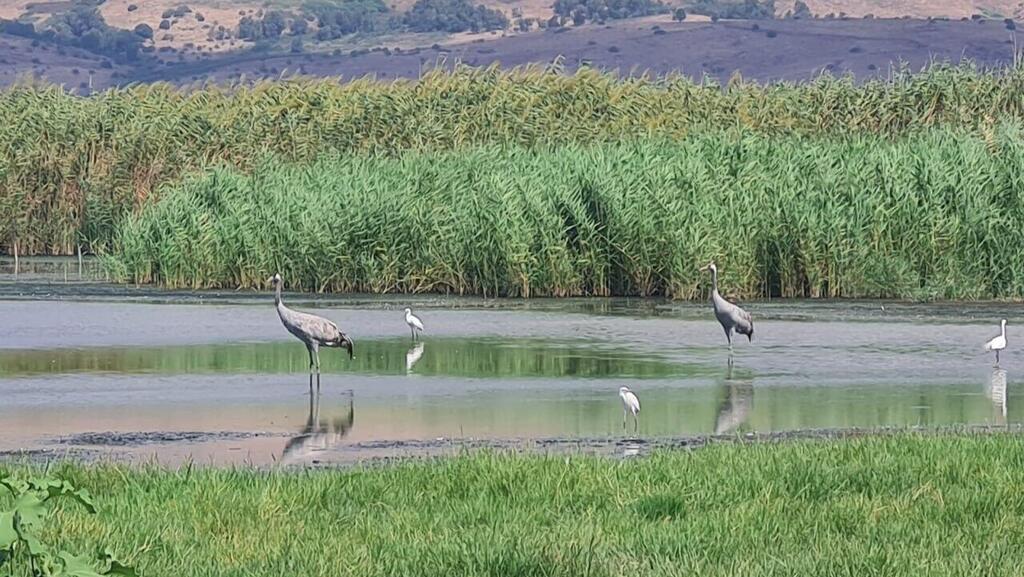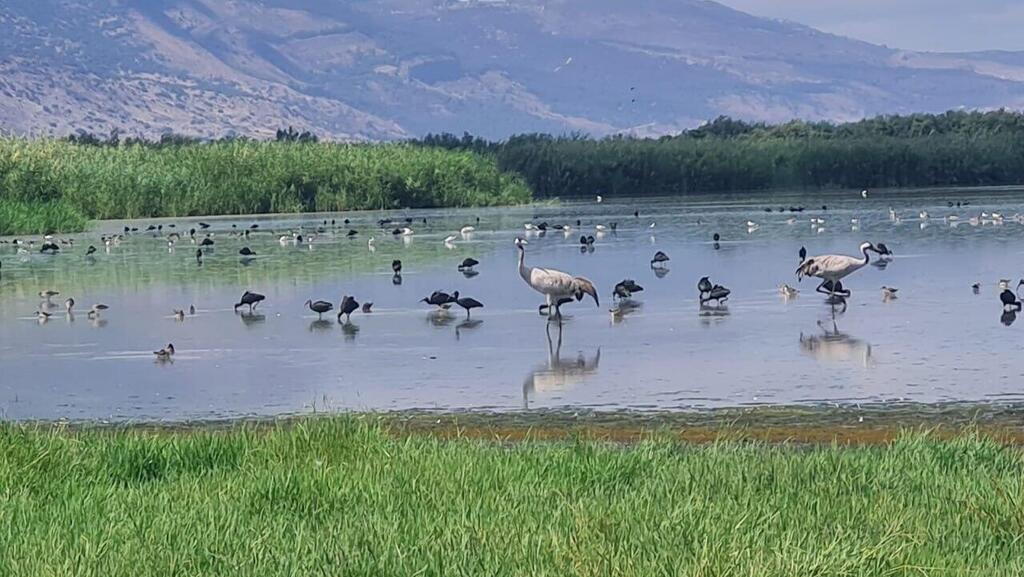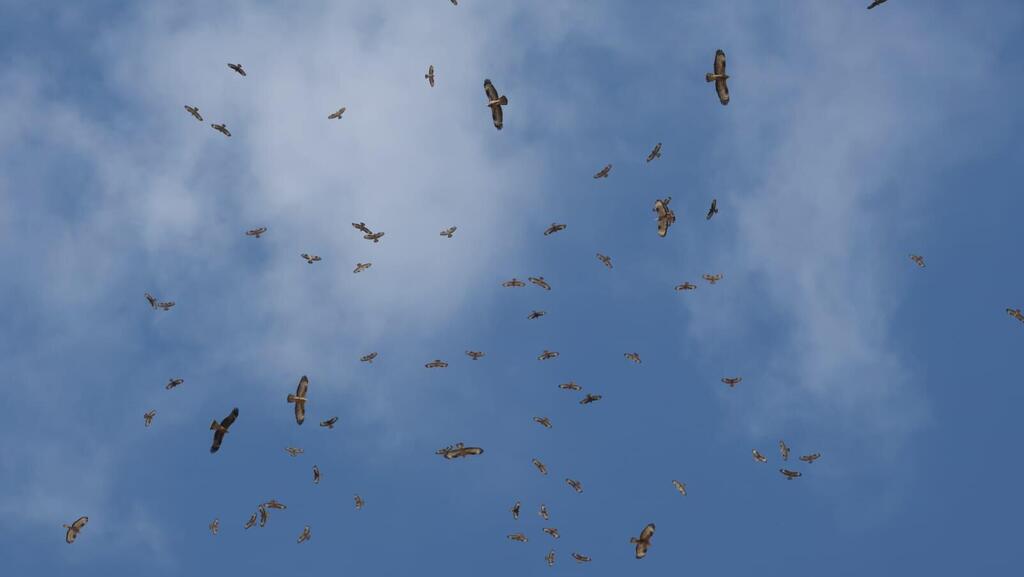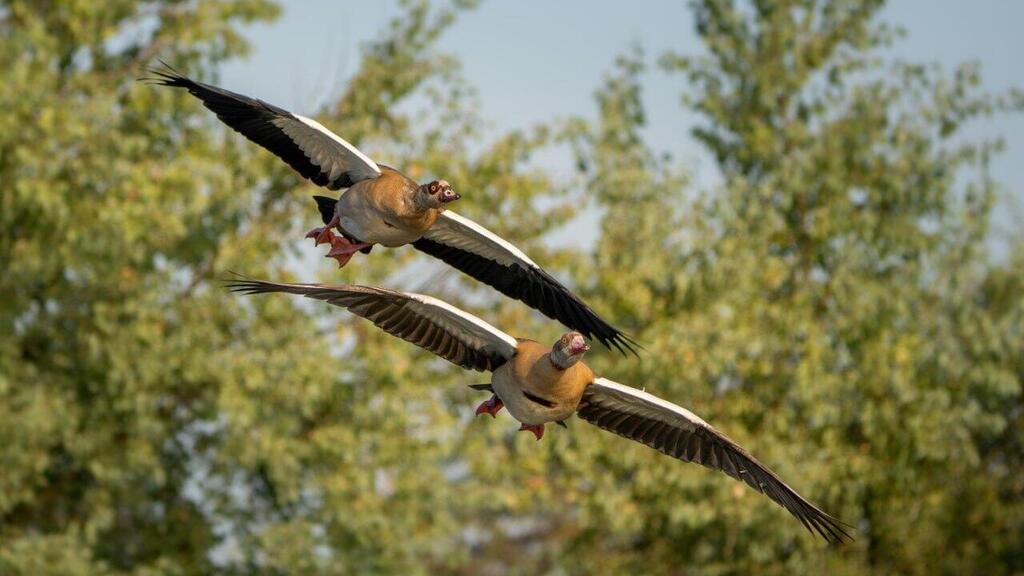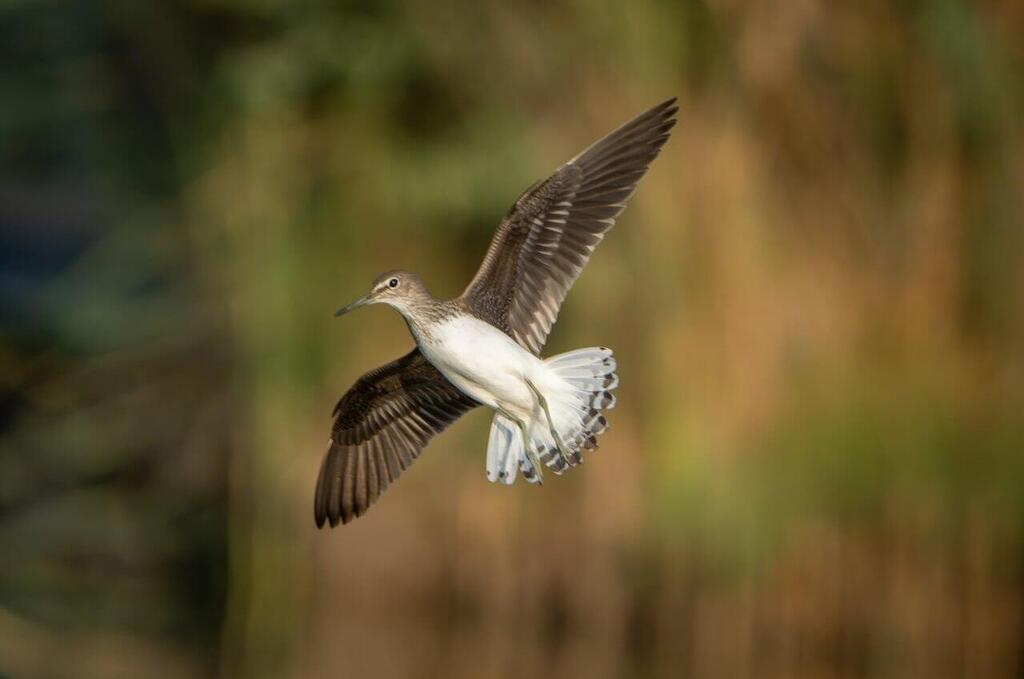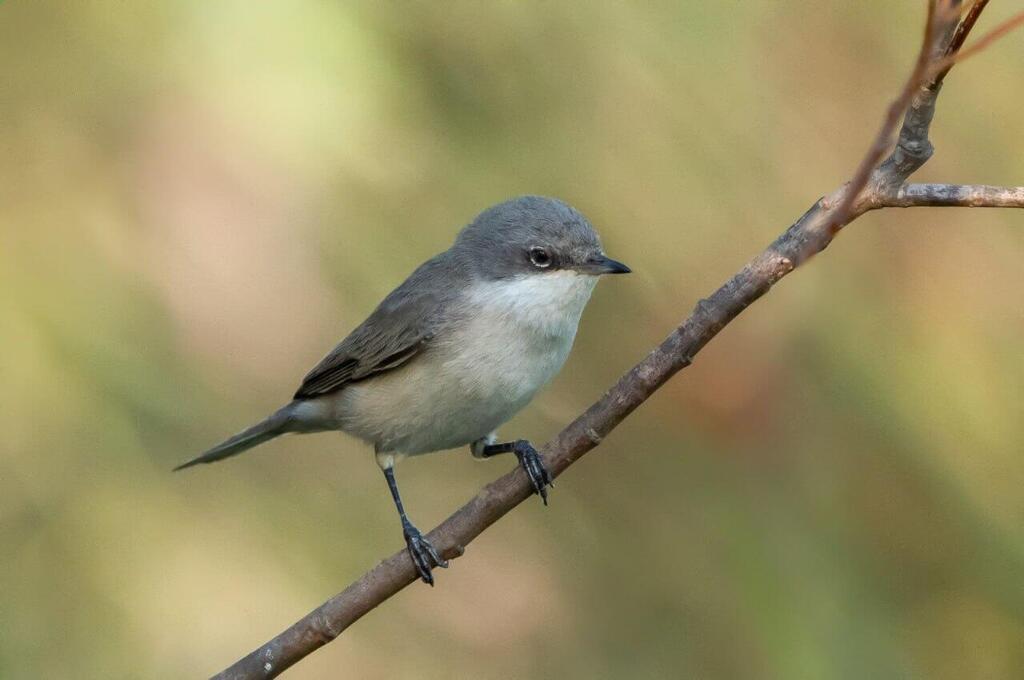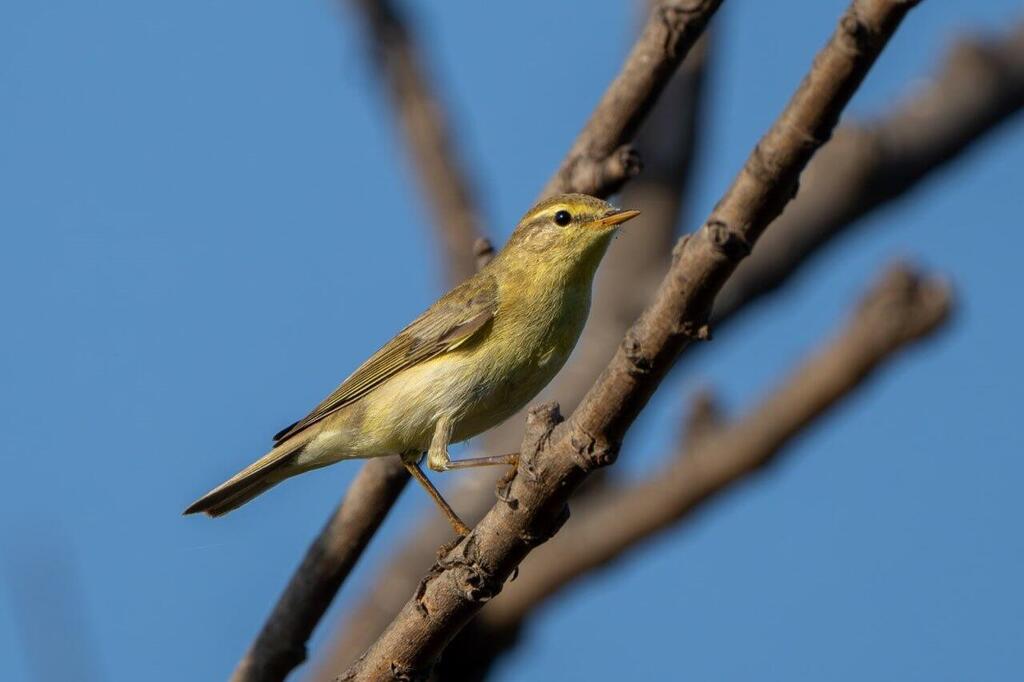About 250 million birds are expected to pass through Israel, one of their most important migration routes, in the coming months. Despite reports from Ukraine about the impact of war on birds, the situation in Israel remains stable. Birds are drawn to the Hula Valley, located close to the Lebanon border, via mountain passes as well as the Metula and Golan Heights regions.
Thousands of storks, honey buzzards and European turtle doves can now be seen making their way through the country. In the Beit She'an and Jezreel valleys, hundreds of thousands of migratory birds will pass through, with the fishponds of the area serving as their last stop before the desert.
"We're in wartime, but we don't see significant changes in terms of migratory birds," said Yoram Malka, an Israel Nature and Parks Authority ranger at the Hula Nature Reserve. "Unless there are missile interceptions above the reserve, in which case we might see some panic and then a return to routine by the avians."
"During the IDF’s preemptive strike in Lebanon, we saw the start of the raptor migration at 6 a.m., which usually doesn't happen at that time. Raptors typically wait for warmer hours, but such heavy artillery fire likely pushed them to begin migrating earlier than usual,” he added.
Yuval Dax, an ornithologist from the Society for the Protection of Nature in Israel, explained that birds don’t understand the situation in Israel. "They don't know the war is dangerous, but the war doesn’t affect their migration. Their route is a combination of genetics and geography," he said.
Dax also surveys the Ariel Sharon Park, one of the key stopover points for migratory birds in central Israel. Over the years, it’s become clear that the park is one of the most important stopover sites, especially in the Tel Aviv area. It’s an island of wetland habitats and fields, providing a resting spot for nearly 200 bird species.
Among the notable guests during this fall migration is a green sandpiper, a bird from the Scolopacidae family that breeds in northern Europe and Asia. Other rare migrating birds include the great snipe and the oriental skylark. "September marks the peak of migration," Dax said. "Thousands of birds pass through the area, with most of the migration happening at night."
"The concept of war doesn’t exist in a bird's lexicon," Dax added. "They don’t know how to deal with it. They just keep doing what they usually do. If they hear an explosion, they’ll flee, but they don’t understand they need to avoid a specific area."
Dax also noted that the white wagtail isn’t the true herald of autumn, as Israelis customarily think. "People tend to think autumn starts with the arrival of the wagtail, but the birds that signal autumn arrive in late July and August, with the storks and waterfowl. Don’t wait for the High Holidays to look for birds – go out now."
Dr. Yoav Perlman, director of the Israel Society for the Protection of Nature’s Birdwatching Center, said: "About 200,000 birds have already passed through the area, but there are of course many songbirds and small migrating birds."
Talking about the impact of war on migration, he explained: "So far, we don’t see the war affecting migration. The migration routes have existed for millions of years and many birds don’t look down, only forward.”
“They cross us in one go and continue onward. When the birds land, however, explosions, noise and fires can affect them locally. But the birds face other challenges, such as habitat loss, electrocutions, hunting and poisoning. These negatively affect migration,” he added.



